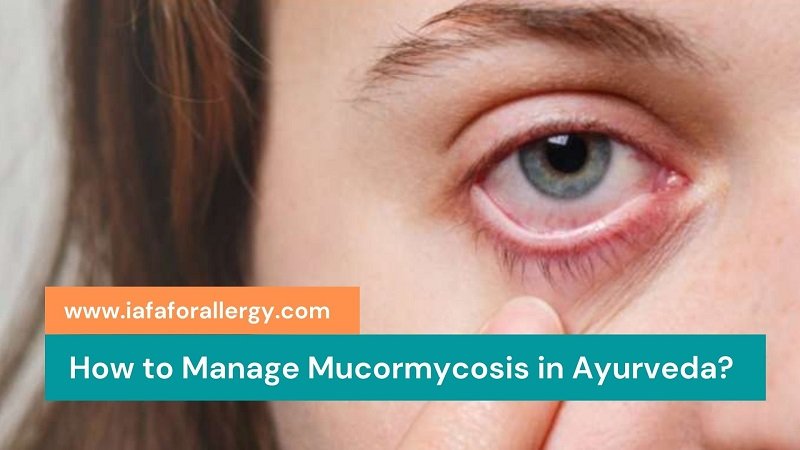India is currently combating the second wave of coronavirus disease and the medical fraternity in our country is not only concerned about this deadly contagious virus but also other complications that are being reported in patients. Due to COVID outbreak, the patients of mucormycosis are increasing.
One such lethal complication being observed in patients in recent times is mucormycosis or black fungus infection. It is one of the general fungal infections being seen in recovering COVID-19 patients. The number of cases being reported is increasing. The early detection and hygiene are key to tackle this virus.
Post COVID-19 sepsis is what occurs after SARS-CoV-2 has had a rampage in the human body. It leads to a dysregulated innate immune response, cytokine storm, thrombo-inflammation, microvascular coagulation and eventual immune exhaustion. These events facilitate secondary bacterial and fungal infections especially in critically ill patients. Further, the use of corticosteroid treatment creates the perfect setting for mould infections.
The two most important manifestations of mucormycosis are rhino-orbital-cerebral and pulmonary.
What is Mucormycosis?
Mucormycosis or black fungus, previously termed as zygomycosis, is a rare fungal infection caused by the mucormycete mould, that is typically found on decaying fruits and vegetables. It causes disease only when immunity is critically low.
Mucormycosis is not a new disease as it is known to occur in patients with low immunity such as in cases of organ transplant, some cancer patients, uncontrolled diabetes etc.
It is a rare but serious complication of COVID-19. This infection can cause loss of eye vision and can be life-threatening as well. Mucor infection can occur during COVID-19 infection or a few weeks after recovery from COVID-19. Mucormycosis is not a communicable disease which means that it does not spread from one person to another.
What are the Symptoms of Mucormycosis?
- Sinusitis is a common symptom of mucormycosis along with clogging of nasal tract and discharge of bloody or blackish mucus from the nose.
- Distinct blackish discolouration on the bridge of the nose.
- Pain on only one side of the face and cheekbones with lack of sensation.
- Prominent aching in teeth and jawbone.
- Hazy vision, with objects appearing blurred or double with pain in one or both eyes.
- Deterioration of respiratory functions associated with chest pain and excessive fluid build-up in lungs i.e., pleural effusion and coughing up blood.
What is Causing this Mucor Surge?
- COVID-19 has the tendency to worsen diabetes and also causes diabetes in normal individuals.
- COVID-19 infection itself causes decrease in some types of white blood cells and thus decreases immunity.
- Some medications used in the treatment of coronavirus disease can worsen the immunity.
- The severity of Mucor infection is largely dependent on the patient’s immunity. If COVID-19 infection, high blood sugar levels, and immunosuppressive treatments – these factors are present, then the risk of infection increases.
The major factor that increases the efficacy of mucormycosis treatment is an accurate and immediate diagnosis as the alternative erroneous diagnosis further led to the prescription of steroids which will add fuel to the fire.
How to Prevent Mucormycosis?
Maintaining proper hygiene is very important for diabetic patients since chances of opportunistic infection is very high in these patients. Those who are using oxygen concentrators should ensure cleaning of humidifiers regularly.
There are simple preventive measures that help in lowering the chances of acquiring mucormycosis post-COVID recovery. These are:
- Wearing face masks and face shields while going outside.
- Ensuring personal hygiene. Washing hands thoroughly after returning home from work.
- Making sure to wear fully covered clothing of concealed shoes, long-sleeved shirts, long pants and gloves while coming in contact with soil, manure, moss, indulging in gardening activities etc.
What is the Ayurvedic Treatment of Mucormycosis?
You can use IAFA Nasal All Clear Spray, IAFA Nasal Air, and IAFA Nasal All Clear X Drops to prevent mucormycosis. For more information, you can consult our health experts online.
Do’s and Don’ts for Patients
Do’s:
- Give history of diabetes to doctor
- Get sugar levels checked
- Maintain basic hygiene and cleanliness
- Watch for early signs of the infection
- Follow medical advice
Don’ts:
- Self-medication, especially the intake of steroids
- Delay in reporting the symptoms of Mucor
- Ignoring medical advice








